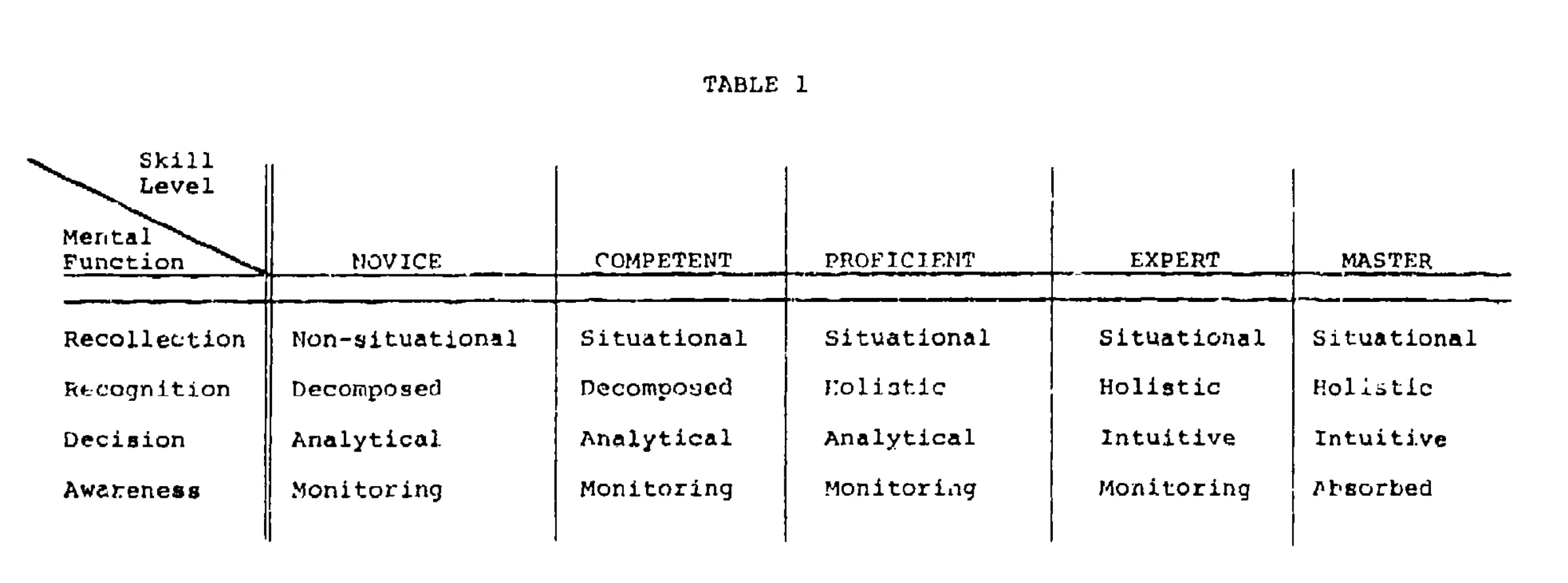📖A Five-Stage Model of the Mental Activities Involved in Directed Skill Acquisition
- authors
- Dreyfus, Stuart E. and Dreyfus, Hubert L.
- year
- 1980
- superseded by
- stages:
- novice
- competence
- proficiency
- expertise
- mastery
_
… erroneous information obtained by scientific methods (and therefore having an aura of truth) is more harmful than no information at all … —Konecni and Ebbesen
- with expertise, students move from relying on abstract formal rules to concrete experience
- Stages description:
- Novice. Formal rules are described using context-free features (ones, performers can detect without expertise). The performer should be (self-)monitored to bring himself into more conformity with the rule.
- Competence. Recurrent patterns of environment are noticed (or pointed out by instructor). These are not context-free, but situational. These patterns are called aspects. (Aspects are not whole situations.) Instructor might give guidelines on what to do in such situations. All guidelines are expressed as of equal importance.
- Proficiency. At proficiency level, the performer sees the whole situation and sees the end goal. He can analyze aspects as more or less important (some aspects might be decided to be irrelevant). Performer uses a memorized principle (maxim) to choose appropriate action.
- Expertise. The first non-analytical stage. Instead of relying on rule, guideline, or maxim, the required action presents itself automatically when situation is faced (by intuition). (Because there is a learned response to any situation.) (This is the last stage in development of skills.)
- Mastery. Experts may experience moments of intense absorption (Flow?) when their performance increase even further and they can pay no conscious attention.
